1960s
Interama
A Utopian project in Miami that never materialized.Wikipedia article here.
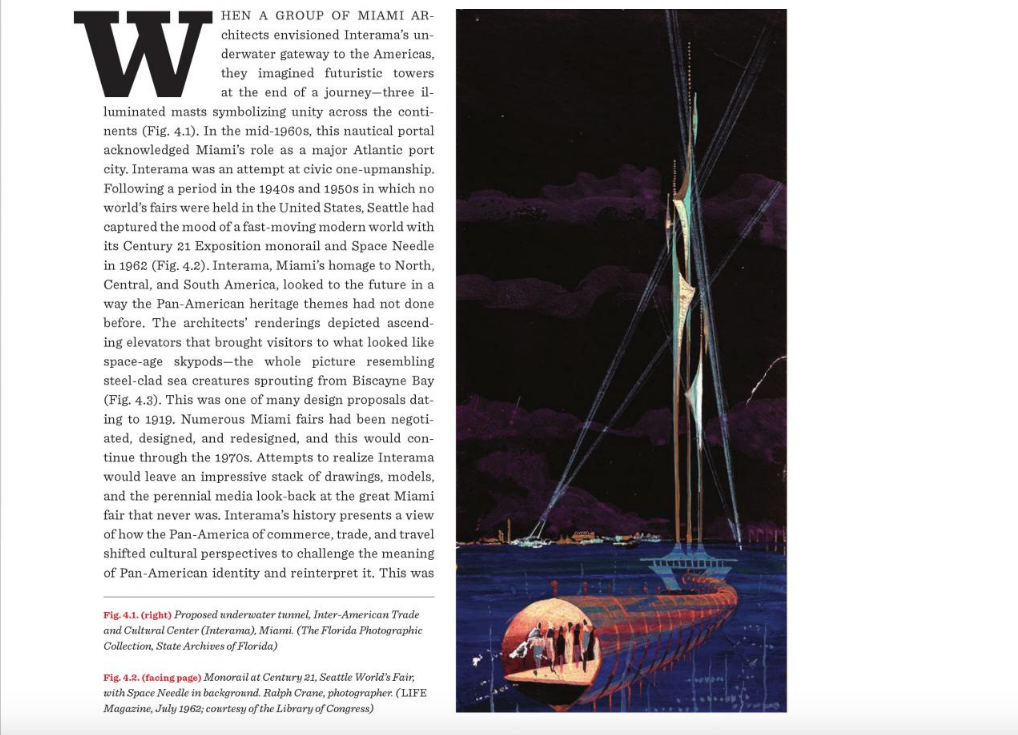
Posted By: Paul - Sat Feb 29, 2020 -
Comments (0)
Category: Architecture, Fairs, Amusement Parks, and Resorts, Government, Regionalism, 1960s
The Nothing Box
A gag gift from the early 1960s, created by inventor Jack Hurlbut: "When a button is pressed the lights flash, the dials spin, the switches turn—and nothing happens."It briefly made headlines in 1965 when a man took one with him on a flight, and was promptly detained on the suspicion that he was carrying a bomb.
The Nothing Box is another one of those vintage curiosities that seem to have completely disappeared. I can't find any evidence that one of them still exists.
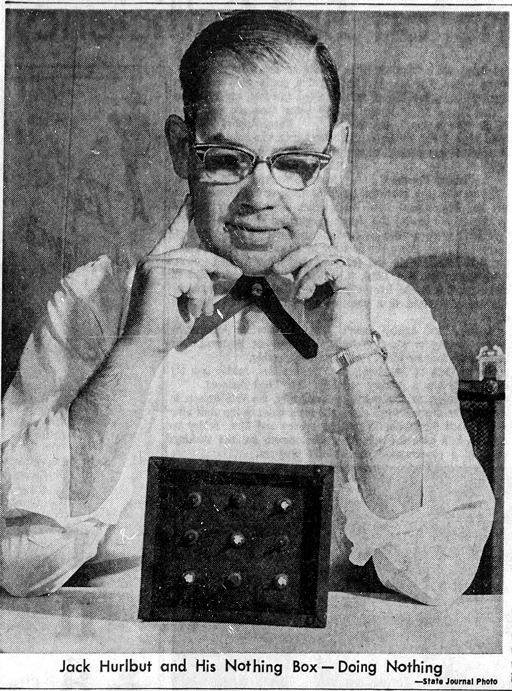
Wisconsin State Journal - May 18, 1964
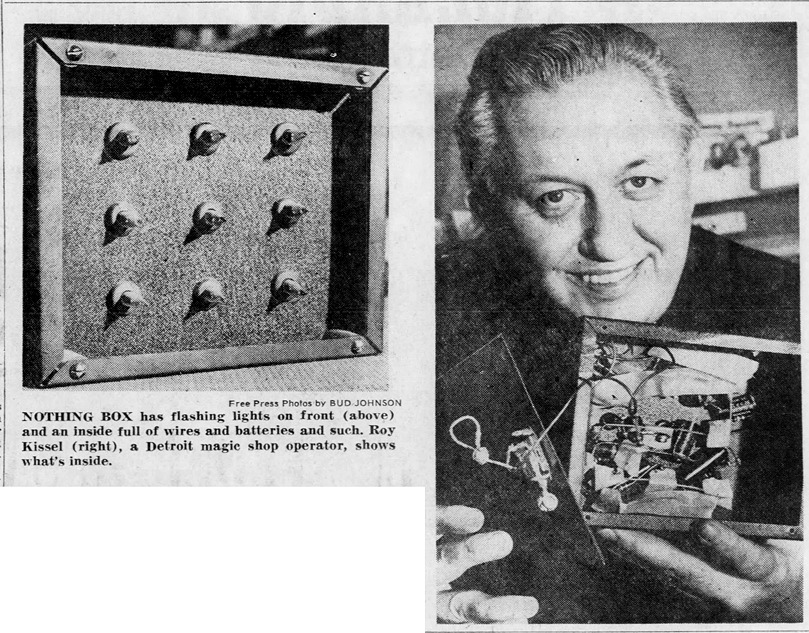
Detroit Free Press - Dec 28, 1965
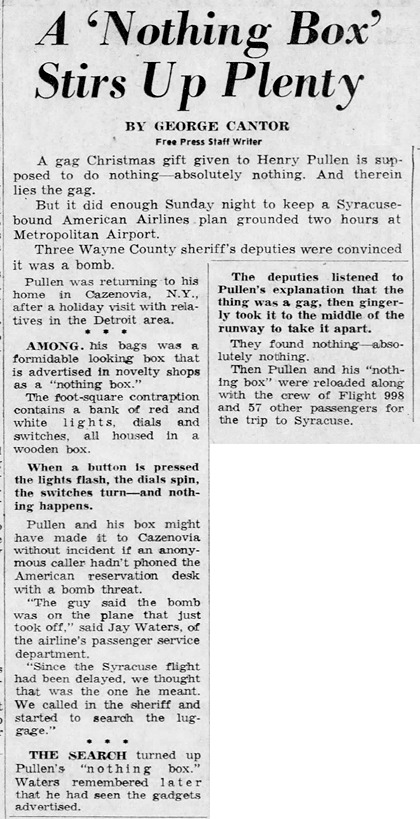
Detroit Free Press - Dec 28, 1965
Posted By: Alex - Fri Feb 21, 2020 -
Comments (4)
Category: Inventions, 1960s
Relationship of noise tolerance to martini consumption
Back in the sixties, researchers weren't afraid to tackle the really important questions...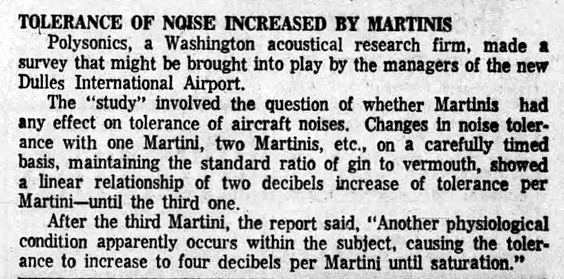
Knoxville News Sentinel - Dec 2, 1962
Posted By: Alex - Mon Feb 17, 2020 -
Comments (6)
Category: Science, 1960s, Alcohol, Cacophony, Dissonance, White Noise and Other Sonic Assaults
DIY Bikini
Posted By: Paul - Mon Feb 17, 2020 -
Comments (1)
Category: Beauty, Ugliness and Other Aesthetic Issues, Contests, Races and Other Competitions, Fashion, 1960s
Sprink
I wonder how much consumer research this company did before deciding to name their product 'Sprink'. I'm guessing they thought it was a catchy shortened form of 'sprinkle'. But the problem is that the name sounds too much like 'Stink', which is exactly the wrong association for a room-rug freshener. Must be why it doesn't seem to have been on the market more than a few months.
Rocky Mount Telegram - June 18, 1963

Cincinnati Enquirer - Oct 21, 1962
Posted By: Alex - Fri Feb 14, 2020 -
Comments (2)
Category: Odd Names, Products, Fetishes, 1960s
Donkey Bike
Posted By: Paul - Fri Feb 14, 2020 -
Comments (1)
Category: Bicycles and Other Human-powered Vehicles, Inventions, 1960s
Sing Along with Khrushchev Coloring Book
A few days ago, Paul posted about a Khrushchev coloring book authored by Jack Davis. Another Khrushchev coloring book was created in 1962 by the Hungarian cartoonist Victor Vashi with text by Ilona Fabian.I haven’t been able to find any photos or scans of it online. And according to Worldcat, it’s only held by two US libraries. So, it’s extremely obscure. However, its existence establishes Khrushchev coloring books as a tiny, but existing literary genre.
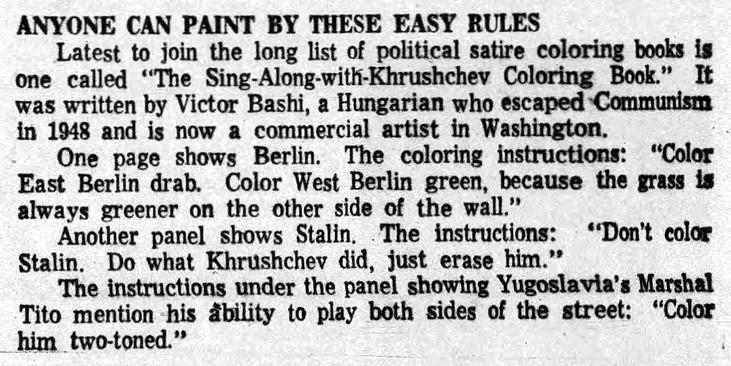
Knoxville News Sentinel - Jan 20, 1963
Some selections from the text ran in the Brooklyn Daily Eagle (Apr 18, 1963):
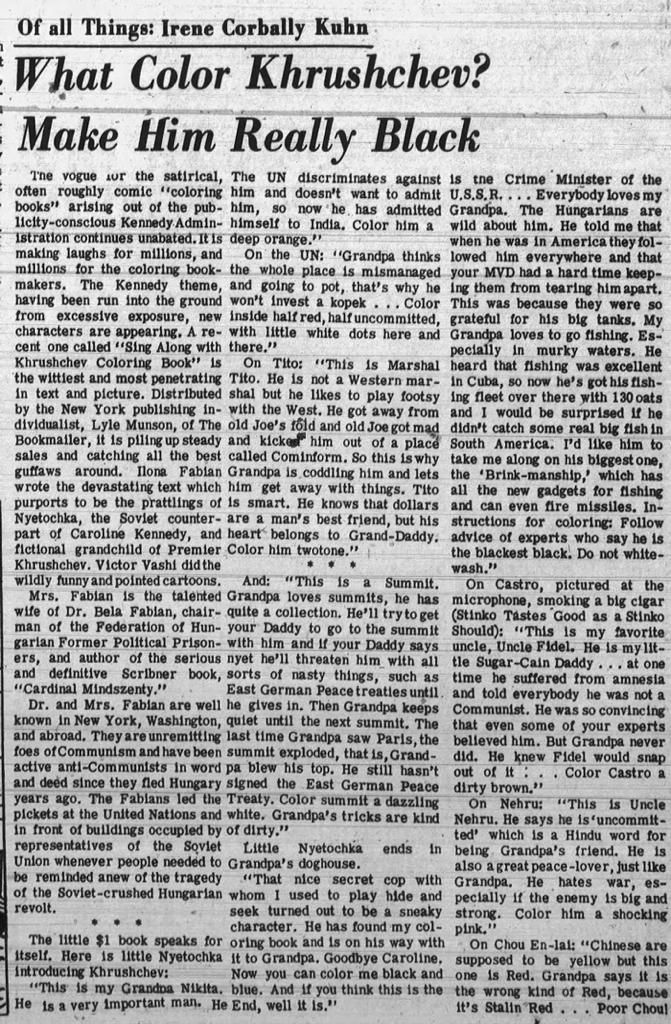
Posted By: Alex - Wed Feb 12, 2020 -
Comments (0)
Category: Art, Dictators, Tyrants and Other Harsh Rulers, Politics, Books, 1960s
Live Beetle Brooch
A living beetle, encased in a silver girdle, worn as a brooch. It was said to be “the rage of high-fashion Europe” in the early 1960s. With proper care, this living brooch supposedly would survive from two to six years.I don't think a beetle would suffer by being worn as a brooch. Would it even care if it was being fed well? Even so, I'm guessing that living jewelry wouldn't go over well nowadays. Though that's no great loss to the world of fashion.



Toronto National Post - Dec 8, 1962
Posted By: Alex - Mon Feb 10, 2020 -
Comments (1)
Category: Insects and Spiders, Jewelry, 1960s
Suntan Suzy Doll
Suntan Suzy was a doll that would develop a tan if you put her in the sunlight. Back in the shade, her tan would fade. She came on the market in 1962, but lasted only one season. As far as I can tell, she was the only doll that has ever had the ability to tan.
Arizona Republic - Nov 23, 1962

image source: worthpoint
The chemistry responsible for producing the tanning effect is described in Patent No. 2,921,407 (Jan 19, 1960) – “Simulating Sunburning Toy Dolls and Figurines”:

1550 grams of a high molecular weight polyvinyl chloride polymer, in powdered form, were dispersed in this solution by stirring for ten to fifteen minutes. The latter material was specifically Bakelite Company QYNV polymer. Thus a plastisol formulation containing the phototropic dye dissolved in the liquid dioctyl phthalate (plasticizer phase) was obtained. About 120 grams of this plastisol formulation were then poured into a two piece steel mold, this having its inner surface previously coated with a silicone oil release film. This was then placed in an oven at 140 degrees centigrade and held at this temperature for eight minutes to allow solution of the polyvinyl chloride polymer phase. The mold and contents were then removed from the oven, cooled to room temperature, and the now solid form of the doll figure removed.
The figure thus produced was transparent and red in color. Upon exposure to sunlight a progressive darkening to a brown, then blue-black color occurred during a period of about three to four minutes, simulating a “sunburning” effect. When the doll was shielded from the sun a return to the original color took place, being visually complete after a period of eight to ten minutes. This action was repeatable with no detectable change in functional characteristics being noted after several dozen cycles.
It seems like an interesting gimmick for a doll. Curious it never caught on.
Posted By: Alex - Fri Feb 07, 2020 -
Comments (3)
Category: Inventions, Patents, Toys, 1960s
Frustration Room
In 1962, the Imperial Inn in Chicago opened a “frustration room.” It was a room that people could rent to vent their frustrations. They were supplied with dishes, lamps, furniture, and light bulbs, and they were invited to hurl these against the wall of the room. On the wall were pictures of policemen and politicians, among other things. The hotel manager noted, “there is a chance that someone might get carried away, and unwind so far that he needs to wind himself back up again. So as a special precaution we have a straight jacket available for anybody who goes berserk.”
Pittsburgh Press - Aug 19, 1962

Opelousas Daily World - July 15, 1962
Posted By: Alex - Mon Feb 03, 2020 -
Comments (3)
Category: Emotions, Hotels, 1960s

| Who We Are |
|---|
| Alex Boese Alex is the creator and curator of the Museum of Hoaxes. He's also the author of various weird, non-fiction, science-themed books such as Elephants on Acid and Psychedelic Apes. Paul Di Filippo Paul has been paid to put weird ideas into fictional form for over thirty years, in his career as a noted science fiction writer. He has recently begun blogging on many curious topics with three fellow writers at The Inferior 4+1. Contact Us |




